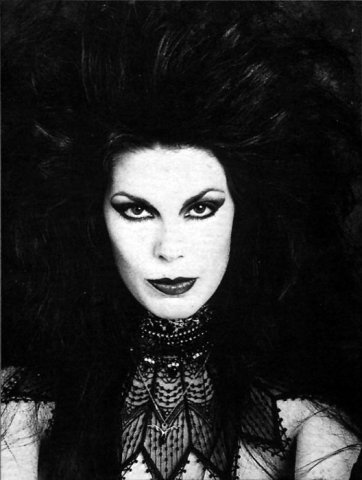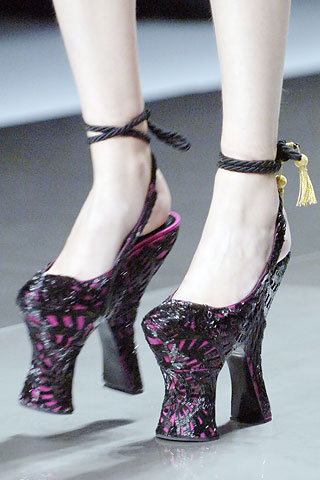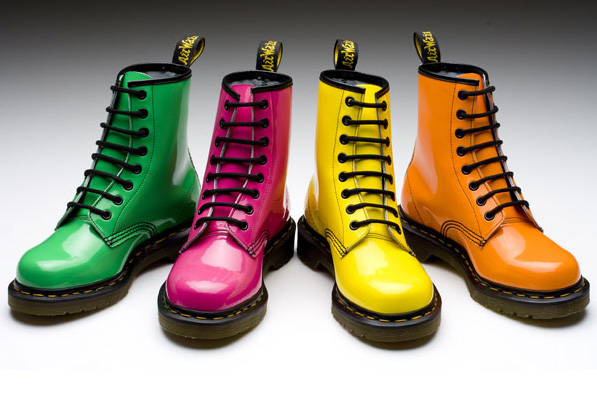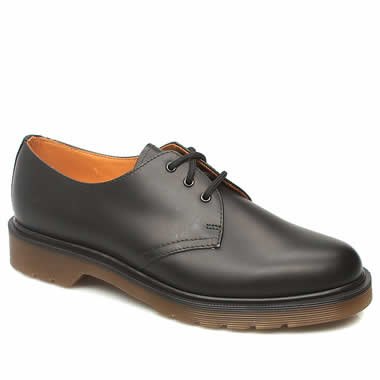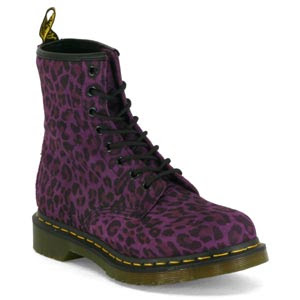Circa Nocturna. Circa is an alternative fashion show run in Melbourne, Australia. It has the honour of being Australia's longest running alt fashion event, and possibly the largest as well (though a little hard to tell - it all depends on how you measure it!).
Circa spawned after the realisation that there was a big alt fashion show in Sydney, but not one in Melbourne.
After briefly being dubbed
Nightware, The show was called "Nocturnal Instincts". The Sydney inspiration had been Edge City which was then one of Australia's premier fashion shows, the Mercedes Fashion Week in Sydney. So we decided to hook the show up with a big show in Melbourne. L'Oreal Melbourne Fashion Festival was very happy to have us on board as part of their arts programme.
The show's main point of difference from other catwalk was that it used alternative people and freaks as catwalk models, the people on the catwalk modelling the outfits were the sort of people that would wear the alt fashion, some of them were designers as well.
First show was at a club called
Tatou in Melbourne, near Southern Cross Station. It only had space for a little stage, we had about 8 designers. The show did pretty well, thought it really suffered from having a smallish space and a short catwalk. As it was run at a club, the After Party (which was called Gothanistas) started as soon as we cleared the cat walk off the dance floor.
The second show in 2006 expanded out to a larger space. We opted for using a comedy Venue. This was a massive venue, capable of holding about 700 people, however, being a comedy venue, there was only backstage space for a couple of comedians to hang out in a little room and have a few pre show cigarettes. We had to build another area by hiring in temporary walls for all the models to get changed. This was expensive, but the night was still successful. The after party was held at the club.
By this stage we were looking to move away from a Goth specific theme, and were looking at showing off all types of alternative fashion. The name was changed to Circa Nocturna to reflect this. By 2007 we had outgrown Clubs and after much hunting around, decided to move it up a notch and get a larger venue, more suited for shows. We ended up at Northcote Town Hall. This was a great venue, had a small hall next to it which we used for practice, and had quite a nice bar. It was also quite close to where a lot of us lived. The only thing was, we were worried that moving the show out of the city into the North may damage it. We shouldn't have worried...the people followed. The show had grown to about 12 designers at this stage. This was the first year we experimented with a market, three of the designers set up tables in a room outside the show. Once again, the show was quite successful.
For the 2008 show we decided to move to another venue, the Fitzroy Town Hall. This also was a great venue, and we liked it so much we have been there ever since. I had been trying to get it for years, and it was always being renovated - so as soon as it was available we booked it. The 2008 show saw us split the designers into two groups, the established and the new designers. We also offered a prize to the best new designer.
2009 once again saw us use the same venue. By this stage we were getting some top nothc designers, including our first Foreign designer from Russia. We were also starting to get designers from all over Australia, with designers fly in from Perth and Brisbane and Canberra to be in the show. The 2009 show was once again a success and very popular, the after party being held at a nearby club. The day after the show a market was held, entitled
Carnivale Nocturna - this was the first time we had done a second event. It was held the Sunday after the show, and while was moderately well attended, not as well attended as we hoped.
By this stage, the organising committee formed into Non Profit Incorporated Association. This mean the show became non profit, but we weren't doing it for the money anyway, and the Incorporate Assoc status protected the Managing Committee in terms of liability.
2010 was a brilliant show, and the first time a Catwalk wasn't used. Instead, the models walked on the floor. Raised seating was brought in so the audience could still see the models. The stage was set up with antiques fitting the era of the actual Fitzroy Town Hall itself (which dates to the mid 1800's).
And so, on to 2011!
 The amazing Viona Ielelegems - photographer and costumier. Features a range of historical influence in her work, including ruffs.
The amazing Viona Ielelegems - photographer and costumier. Features a range of historical influence in her work, including ruffs.
 Ruff from Russian Vogue shoot. Pearls by Mikimoto, couture by Maidon Martin and Margiola Artisani. Photographer: Sharif Hamza.
Ruff from Russian Vogue shoot. Pearls by Mikimoto, couture by Maidon Martin and Margiola Artisani. Photographer: Sharif Hamza. Lady Ga Ga wearing a ruff on a flying Piano (...of course). Ruff and latex outfit by Atsuko Kudo.
Lady Ga Ga wearing a ruff on a flying Piano (...of course). Ruff and latex outfit by Atsuko Kudo. Close up of ruff by Atsuko Kudo
Close up of ruff by Atsuko Kudo
